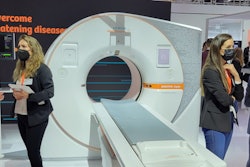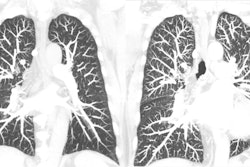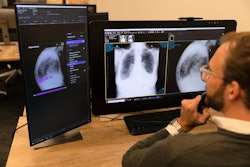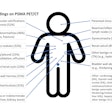Dear AuntMinnie Member,
Magnet accidents in the MRI suite are rare, but unfortunately, sometimes they do happen, and each time sparks vociferous debate on how to improve MRI safety.
AuntMinnie.com's top story this past week recounted the death of a Brazilian man who brought a concealed gun into the MRI room -- a tragic event that occurred despite efforts of staff at São Paulo's Laboratorio Cura Hospital to "follow all accident prevention protocols." Read more at our MRI Community.
Boosting lung cancer screening uptake
In our second most highly read story this week, we reported on research that found that, although low-dose CT (LDCT) lung cancer screening has been shown to reduce mortality, uptake remains low. A team from Medical University of South Carolina in Charleston used data from more than a million eligible individuals and discovered that "adherence to lung cancer screening was poor and likely contributes to the lower-than-expected cancer detection rate, all of which will impact the outcomes of patients undergoing screening for lung cancer." Multilevel interventions that meld policy, health system, provider and patient education are needed, the researchers urged.
In other stories this week in our CT Community, we reported on research that found how a coronary CT angiography-derived radiomics model detects plaque linked to cardiac events, and how the modality reveals that patients who have recovered from COVID-19 may sustain lung abnormalities even two years after symptom onset.
Thrombectomy and rare stroke
Our third most-read story this past week outlines how mechanical thrombectomy may be a safe treatment approach for patients who have had a rare type of stroke due to blood clots in small brain vessels. Get the details in the Radiology News section of our site.
Updated contrast media guidance
If you scroll back to our MRI Community, you'll find our fourth most-read story for the week, which covers the American College of Radiology's release of an updated contrast media manual. Revised sections address topics such as allergic reactions to iodinated contrast, gastrointestinal contrast for adults, administration of contrast to pregnant or breastfeeding women and to children, nephrogenic systemic fibrosis, and treatment of contrast reactions, to name a few.
While you're there, take a look at our coverage of a study that explores how brain imaging of fighter pilots could help better train astronauts and another that evaluates how adding radiomics and artificial intelligence to MRI exams could help characterize breast lesions.
Assessing hepatic steatosis: MRI or CT?
Finally, our fifth most highly read story this week explored the pros and cons of using MRI or photon-counting CT to assess hepatic steatosis; the results may surprise you.




















